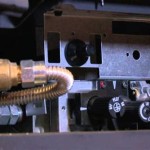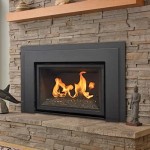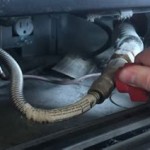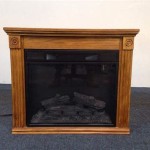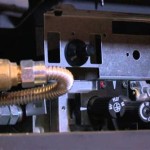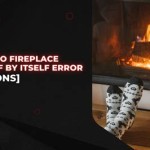Vermont Castings Natural Gas Fireplaces: A Comprehensive Overview
Vermont Castings has established itself as a reputable manufacturer of high-quality fireplaces and stoves for decades. Their natural gas fireplaces offer a blend of classic design, efficient heating, and convenient operation, making them a popular choice for homeowners seeking to enhance their living spaces with the warmth and ambiance of a traditional fireplace without the hassle of wood burning.
Natural gas fireplaces offer numerous advantages compared to their wood-burning counterparts. These advantages include ease of use, consistent heat output, and reduced maintenance. A simple switch or remote control ignites the flame, eliminating the need to build and maintain a fire. The consistent heat output ensures a comfortable and predictable temperature within the desired space. Moreover, the absence of wood ash, soot, and creosote significantly reduces the cleaning and maintenance requirements associated with wood-burning fireplaces.
Vermont Castings natural gas fireplaces are designed with a focus on both aesthetics and performance. They incorporate features such as realistic log sets, adjustable flame heights, and thermostatic controls to create a customized and enjoyable fireplace experience. The integration of advanced burner technologies maximizes fuel efficiency and minimizes emissions, contributing to a more environmentally friendly heating solution.
Key Features and Technologies
Vermont Castings incorporates several key features and technologies into their natural gas fireplaces that contribute to their performance, efficiency, and aesthetic appeal. Understanding these aspects is crucial when evaluating the suitability of a Vermont Castings fireplace for a particular home.
One prominent feature is the realistic log set design. These log sets are meticulously crafted to mimic the appearance of natural wood, adding to the authenticity of the fireplace experience. They are typically made from ceramic fiber or refractory materials, which are durable and capable of withstanding high temperatures. The placement and arrangement of the logs are carefully considered to create a visually appealing flame pattern that enhances the overall ambiance of the room.
Adjustable flame height control is another important feature. This allows users to customize the intensity and appearance of the flame to suit their preferences. Lower flame settings can be used to create a subtle and relaxing atmosphere, while higher settings provide more heat output and a more dramatic visual effect. The flame height is typically adjusted using a remote control or a control panel located on the fireplace itself.
Many Vermont Castings natural gas fireplaces are equipped with thermostatic controls. These controls allow users to set a desired room temperature, and the fireplace will automatically adjust its heat output to maintain that temperature. This provides consistent and comfortable heating without the need for manual adjustments. Thermostatic controls can also help to reduce energy consumption by preventing the fireplace from overheating the room.
The inclusion of safety features is paramount in the design of Vermont Castings natural gas fireplaces. These features include automatic shut-off mechanisms that activate in the event of a gas leak or other malfunction. Oxygen depletion sensors (ODS) are also commonly incorporated to monitor the oxygen levels in the room and shut off the fireplace if the levels become too low. These safety features ensure the safe and reliable operation of the fireplace.
Installation Considerations
Proper installation is essential for the safe and efficient operation of a Vermont Castings natural gas fireplace. The installation process involves several steps, including venting, gas line connection, and electrical wiring. Adhering to local building codes and manufacturer's instructions is crucial to ensure a safe and compliant installation.
Venting is a critical aspect of natural gas fireplace installation. The fireplace must be properly vented to remove combustion byproducts, such as carbon dioxide and water vapor, from the home. There are typically two types of venting systems used for natural gas fireplaces: direct vent and B-vent. Direct vent systems draw combustion air from outside the home and exhaust combustion byproducts directly to the outside. B-vent systems use indoor air for combustion and vent the exhaust through a chimney or vent pipe. The choice of venting system depends on the fireplace model, the construction of the home, and local building codes.
Gas line connection requires the expertise of a qualified gas fitter. The gas line must be properly sized and installed to provide an adequate supply of gas to the fireplace. The gas line must also be leak-tested to ensure that there are no gas leaks. Improper gas line connection can lead to dangerous gas leaks and explosions.
Electrical wiring may be required for some Vermont Castings natural gas fireplaces, particularly those with electronic ignition systems or remote controls. The electrical wiring must be performed by a qualified electrician and must comply with local electrical codes. Improper electrical wiring can lead to electrical shock or fire hazards.
It is strongly recommended to hire a qualified professional to install a Vermont Castings natural gas fireplace. Professional installers have the knowledge, experience, and tools necessary to ensure a safe and compliant installation. They can also provide valuable advice and guidance on the selection of the appropriate fireplace model and venting system for a particular home.
Maintenance and Care
Regular maintenance is essential to ensure the continued performance and longevity of a Vermont Castings natural gas fireplace. Proper maintenance involves cleaning the fireplace, inspecting the venting system, and checking the gas connections. Following the manufacturer's recommendations for maintenance is crucial to avoid potential problems.
Cleaning the fireplace is an important aspect of maintenance. The glass door should be cleaned regularly to remove soot and other deposits that can accumulate on the surface. The log set should also be cleaned periodically to remove dust and debris. A soft cloth or brush can be used to clean the glass door and log set. Harsh chemicals or abrasive cleaners should be avoided, as they can damage the surfaces.
Inspecting the venting system is another important aspect of maintenance. The venting system should be inspected annually to ensure that it is free of obstructions and in good condition. Bird nests, debris, or other obstructions can block the venting system and prevent proper exhaust of combustion byproducts. Damaged or corroded vent pipes should be replaced promptly.
Checking the gas connections is also important. The gas connections should be checked periodically for leaks using a leak detection solution. If a gas leak is detected, the gas supply should be shut off immediately and a qualified gas fitter should be contacted to repair the leak. Loose or corroded gas connections should be tightened or replaced as needed.
In addition to regular cleaning and inspection, it is also important to have the fireplace professionally serviced annually. A qualified technician can inspect the burner, gas valve, and other components to ensure that they are functioning properly. They can also perform a safety check to identify any potential hazards. Professional servicing can help to extend the life of the fireplace and ensure its safe and reliable operation.
Following the manufacturer's recommendations for maintenance, as provided in the owner's manual, is crucial for proper care of the fireplace. The owner's manual provides detailed instructions on cleaning, inspection, and maintenance procedures. Adhering to these instructions will help to prevent potential problems and ensure the continued performance of the fireplace.
Choosing the Right Model
Selecting the appropriate Vermont Castings natural gas fireplace model necessitates careful consideration of several factors, including the size of the room, the desired heat output, and the aesthetic preferences of the homeowner. Vermont Castings offers a diverse range of models to suit various needs and styles.
The size of the room is a primary consideration when selecting a fireplace. A fireplace that is too small may not provide adequate heat for the space, while a fireplace that is too large may overheat the room. It is important to choose a fireplace with a heat output that is appropriate for the size of the room. Heat output is typically measured in British thermal units (BTUs). A general rule of thumb is to use approximately 5,000 to 10,000 BTUs per 100 square feet of living space, but this can vary depending on factors such as insulation and climate.
The desired heat output is another important factor to consider. Some homeowners may want a fireplace primarily for aesthetic purposes, while others may want it to provide supplemental heating. If the fireplace is intended to provide supplemental heating, it is important to choose a model with sufficient heat output to meet the heating needs of the room. The heat output of a fireplace can be adjusted using the flame height control, but it is important to choose a model with a maximum heat output that is appropriate for the space.
The aesthetic preferences of the homeowner are also a key consideration. Vermont Castings offers a variety of fireplace styles, from traditional to contemporary. It is important to choose a style that complements the decor of the home. The log set design, flame pattern, and finish of the fireplace are all important aesthetic considerations.
In addition to these factors, it is also important to consider the venting requirements of the fireplace. As mentioned earlier, there are two types of venting systems: direct vent and B-vent. The choice of venting system depends on the fireplace model, the construction of the home, and local building codes. It is important to choose a fireplace with a venting system that is compatible with the home.
Finally, it is important to consider the budget. Vermont Castings natural gas fireplaces range in price from several hundreds to several thousands of dollars. It is important to set a budget before shopping for a fireplace and to choose a model that meets the needs and preferences of the homeowner while staying within the budget. Comparing prices and features of different models can help to ensure that the best value is obtained.

Vermont Castings Vent Free Stoves Main Street Fireplace Fall

Vermont Castings Radiance Gas Freestanding Stove Fergus Fireplace

Vermont Castings Intrepid Gas Freestanding Stove Fergus Fireplace

Vermont Castings Radiance Direct Vent Gas Stove Www Pioneerfireplace Com

Vermont Castings Radiance Gas Stove Fireside Hearth Home

Vermont Castings Freestanding Gas Stoves Forge Flame

Vermont Castings Radiance Direct Vent Gas Stove

Vermont Castings Intrepid Dv Gas Stove Mazzeo S Stoves Fireplaces

Vermont Castings Radiance Hearth S Great American Fireplace In Menomonie Wi

Vermont Castings Star Vent Free Gas Stove Inseason Fireplaces Stoves Grills Rochester Ny
Related Posts


